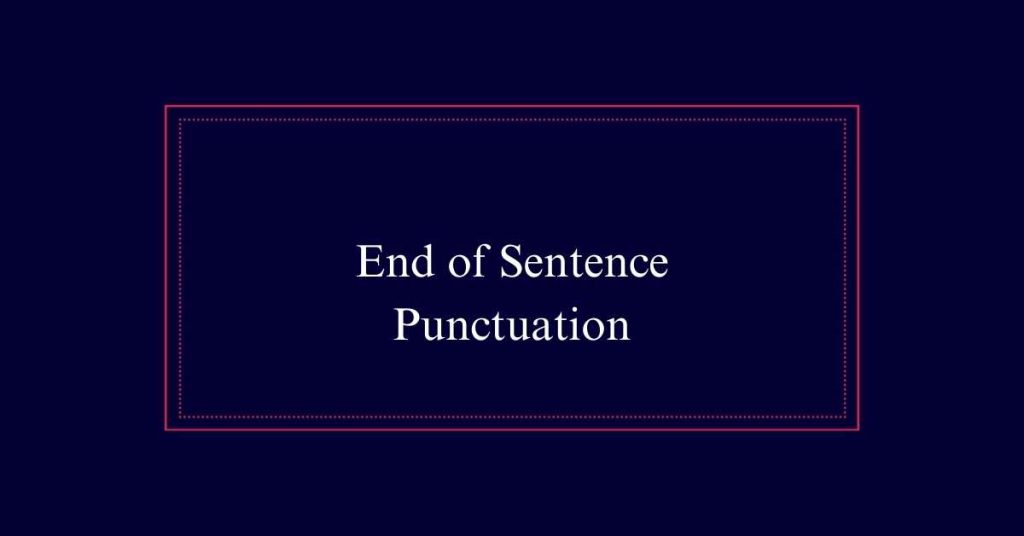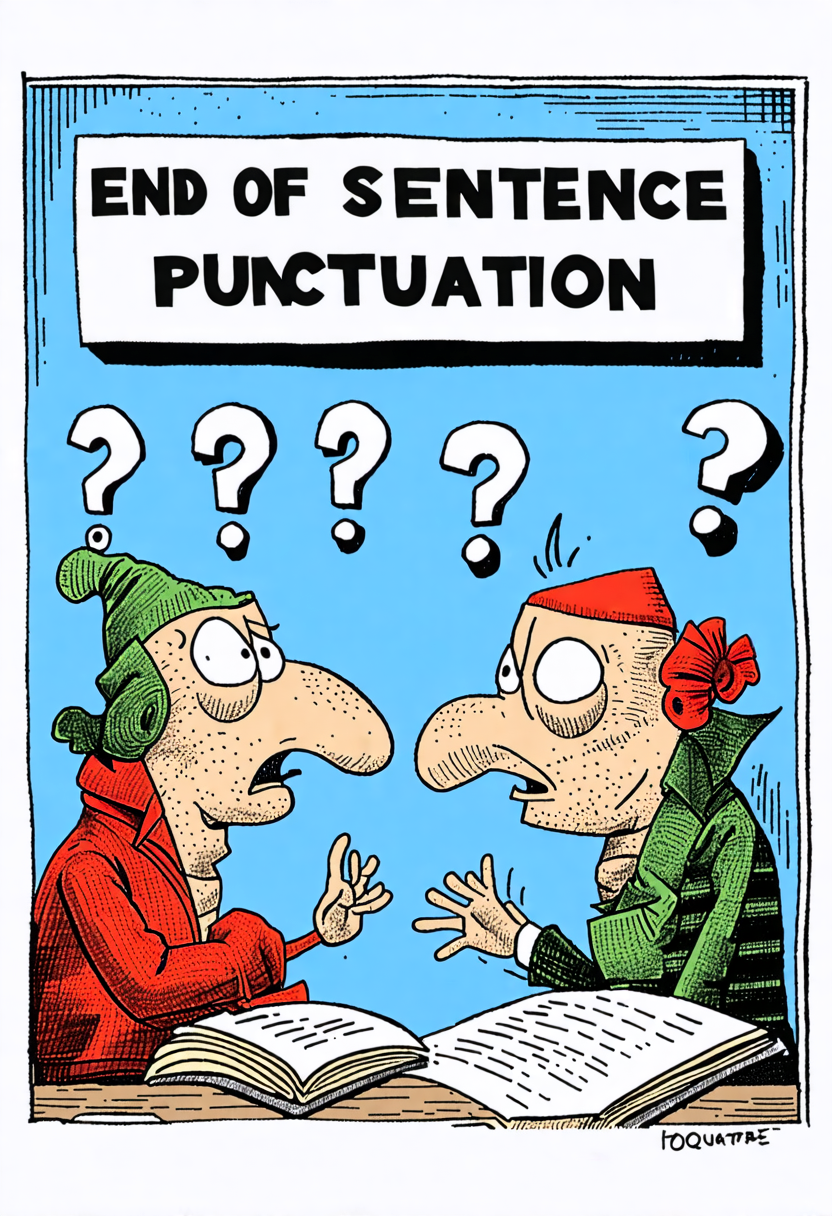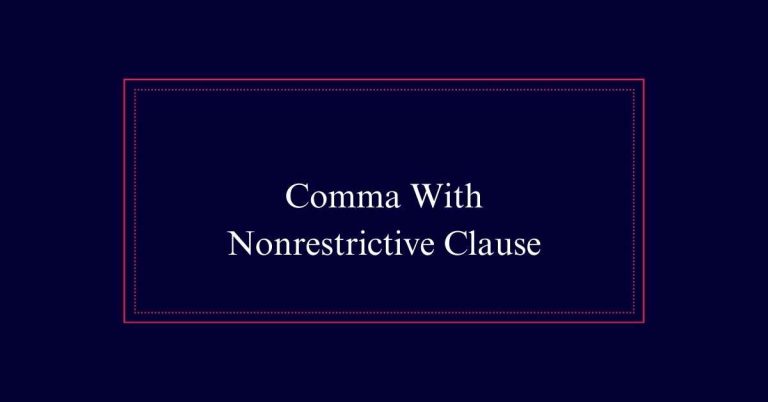End of Sentence Punctuation
End-of-sentence punctuation includes periods, question marks, and exclamation points. Periods end declarative or imperative sentences, such as ‘The meeting starts at 3 PM.’ Question marks indicate questions, as in ‘What time does the meeting start?’ Exclamation points convey strong emotions or urgency, like ‘Watch out!’
Definition and Purpose
End-of-sentence punctuation refers to the marks used to signal the end of a sentence. These marks play a vital role in guiding readers through text. They help clarify the structure and meaning of writing.
Without them, sentences would run together, making the text difficult to understand. Proper punctuation guarantees that ideas are clearly separated and easily digestible. It aids in distinguishing between different types of sentences, such as statements, questions, and exclamations. This helps readers understand the writer’s intent and the tone of the message.
Main Forms Overview
To further understand the significance of end-of-sentence punctuation, let’s explore the main forms in greater detail. The three primary punctuation marks are periods, question marks, and exclamation points. Each serves a distinct purpose in writing.
A period signifies the end of a declarative or imperative sentence, providing a clear, definitive stop. Question marks are used at the end of interrogative sentences, indicating a query or inquiry. Exclamation points convey strong emotions or a sense of urgency, marking exclamatory sentences.
Using Periods
Periods are the most common form of end-of-sentence punctuation. They denote the end of declarative and imperative sentences.
A declarative sentence states a fact or opinion, such as ‘The sky is blue.’ An imperative sentence gives a command or request, like ‘Close the door.’
Periods guide readers by indicating the completion of a thought. They help in structuring written communication, ensuring clarity and coherence.
Proper use of periods is essential for maintaining the flow and readability of text. Incorrect placement can confuse readers and disrupt the intended message.
Always place periods directly after the last word of a sentence, followed by a single space before starting the next sentence.
Periods: Tone and Function
Understanding the tone and function of periods is crucial for mastering their correct usage in various contexts. Periods mark the end of declarative and imperative sentences, signaling a sense of finality and completeness. The tone can vary depending on the structure and content of the sentence.

Here are some key points to keep in mind:
- Declarative Sentences: Periods indicate a statement or fact.
- Imperative Sentences: Periods signify a command or instruction.
- Tone: Periods often establish a neutral or formal tone.
- Clarity: They aid in breaking down complex information into manageable parts.
- Consistency: Use periods consistently to maintain a clear and professional writing style.
Question Marks in Sentences
Question marks are crucial for indicating interrogative sentences. They signal that a question is being asked. This punctuation mark is placed at the end of direct questions. For example, ‘Are you coming to the meeting?’ or ‘What time is it?’
Indirect questions, however, do not use question marks. For instance, ‘I wonder if she will attend the meeting.’
The question mark can also convey uncertainty or request information. It helps readers understand that an answer is expected.
In dialogue, question marks clarify that a speaker is seeking a response, such as ‘Can you help me with this?’
Inquisitiveness and Questions
Inquisitiveness drives the use of question marks, highlighting the importance of seeking information and clarifying uncertainties in writing. Question marks are essential in interrogative sentences, reflecting our natural curiosity and desire to learn. They serve multiple purposes, including:
- Direct Questions: Used at the end of a question to request information.
- Rhetorical Questions: Posed for effect rather than an answer.
- Tag Questions: Added to a statement to confirm or check information.
- Choice Questions: Offering options within a single query.
- Polite Requests: Softening commands to appear more courteous.
Exclamation Points Usage
Exclamation points convey strong emotions and add emphasis to statements. They are used to express vehemence, urgency, or heightened emotion in writing.
An exclamation point can follow an exclamatory sentence, an imperative sentence expressing a strong command, or an interjection. For instance, ‘Watch out!’ or ‘What a beautiful day!’ demonstrate their use.
It is important not to overuse exclamation points, as this can diminish their impact. In professional writing, they should be used sparingly to maintain a tone of seriousness and authority.
Expressing Emotion With Exclamations
Exclamations are a powerful tool for conveying strong emotions in writing. They often punctuate sentences with urgency, excitement, or surprise, adding a layer of intensity. Using an exclamation point at the end of a sentence can dramatically alter its tone, making it more engaging and expressive.
Here are some key points to remember:
- Excitement: ‘We won the game!’
- Urgency: ‘Hurry up!’
- Surprise: ‘What a beautiful day!’
- Anger: ‘Stop that right now!’
- Joy: ‘I can’t believe it!’
Less Common Punctuation
Beyond the common exclamation points, several lesser-known punctuation marks can enhance the clarity and tone of your writing. Ellipses (…) indicate trailing off or hesitation, adding nuance to a sentence.
The interrobang (‽) combines a question mark and an exclamation point, expressing both inquiry and excitement simultaneously. Using a question mark and exclamation point together (?! or !?) achieves a similar effect, though less elegantly.
Additionally, the irony mark (⸮), though rarely used today, was designed to indicate sarcasm or irony. These lesser-known marks provide additional tools for conveying specific tones and emotions, allowing writers to communicate more precisely and effectively.
Tone and Formatting
Understanding tone and formatting is crucial for effective end-of-sentence punctuation. The type of punctuation used can greatly impact the tone of the sentence, conveying emotions like curiosity, excitement, or finality.
Proper formatting guarantees clarity and consistency in writing. Here are some key formatting guidelines:
- Use a single space after punctuation marks.
- Avoid adding extra periods after abbreviations.
- Maintain consistent punctuation style throughout the document.
- Align with a specific style guide (e.g., APA, MLA) for uniformity.
- Be mindful of punctuation marks that can change the sentence’s tone.







